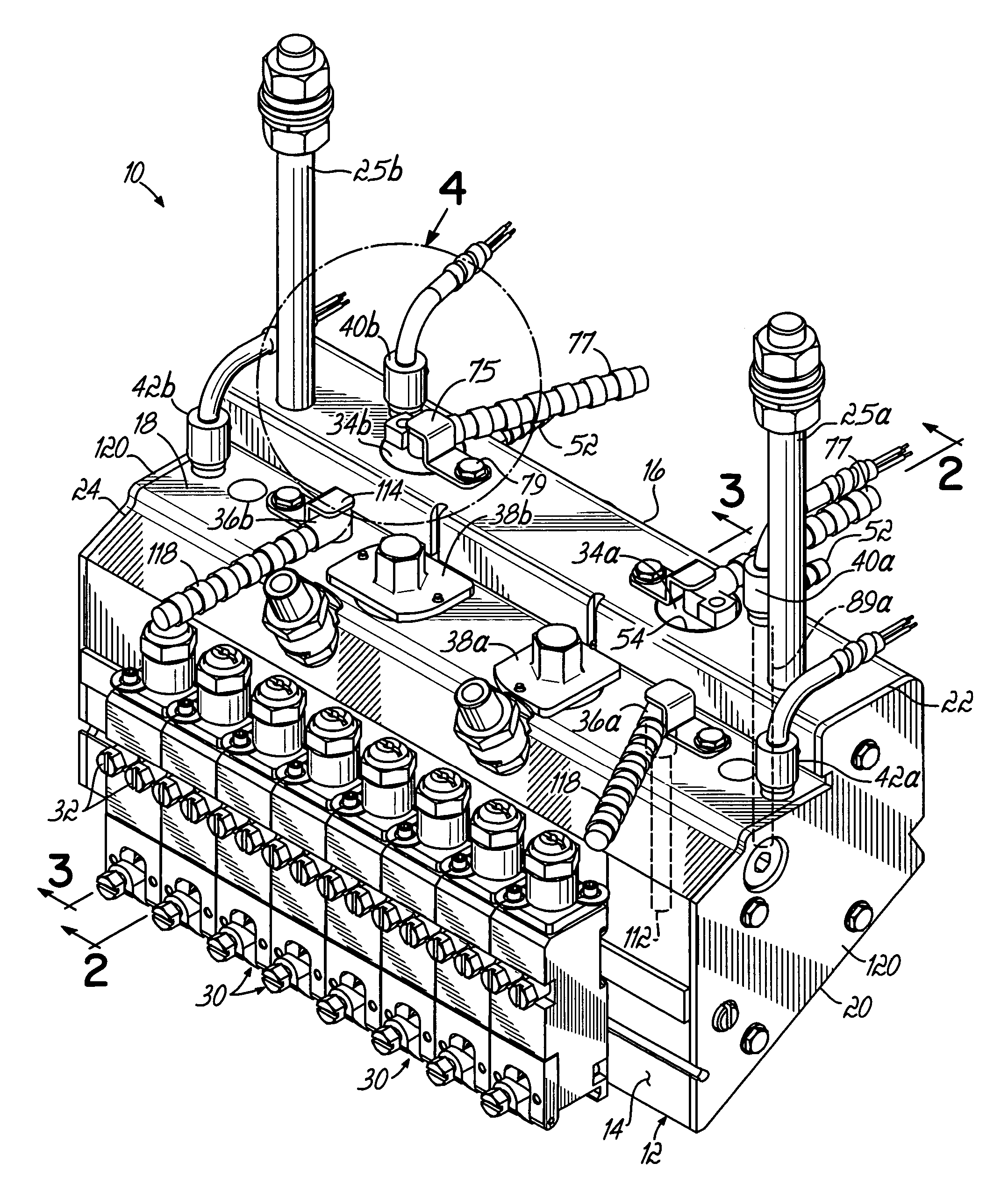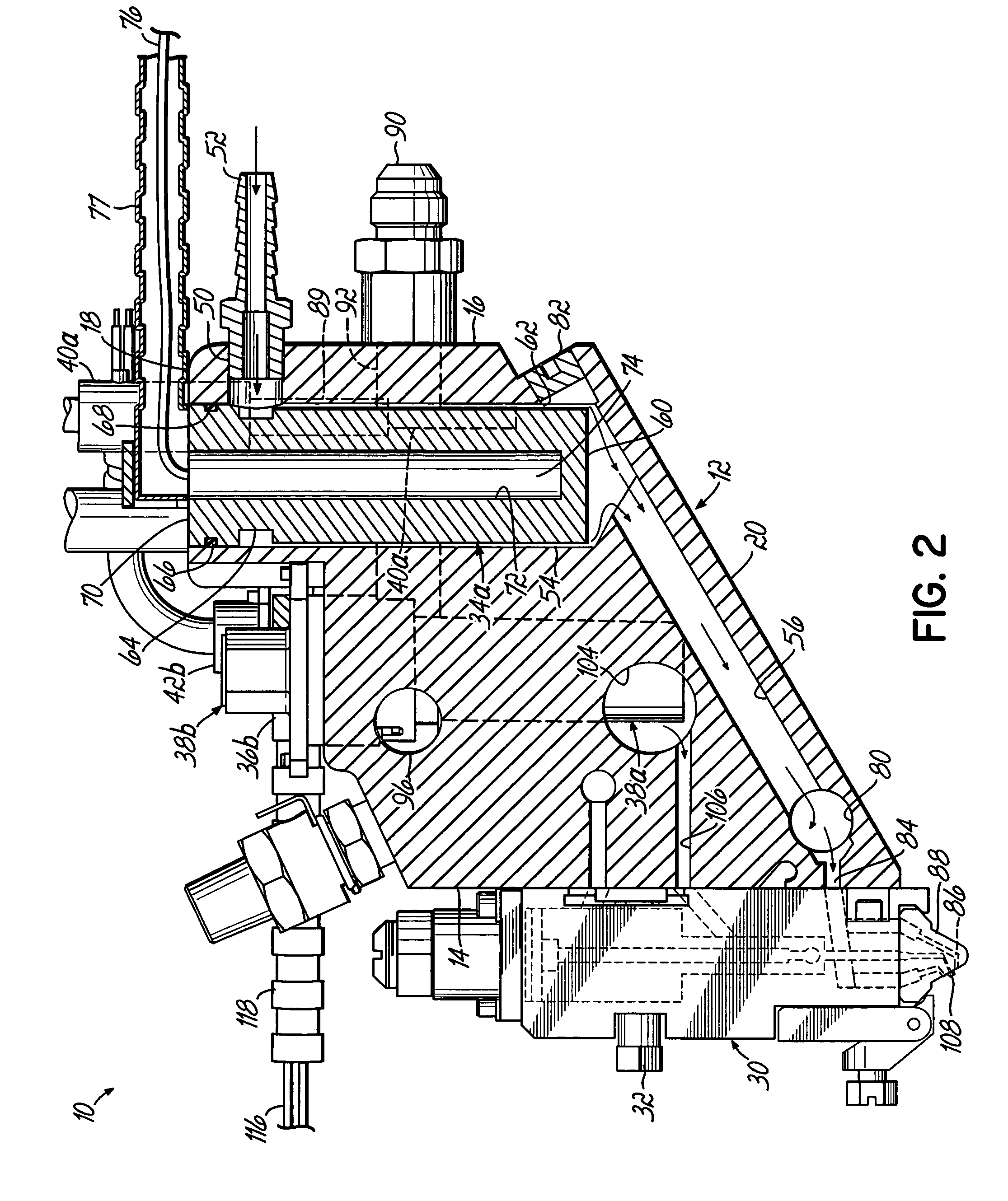Integral manifold for liquid material dispensing systems
a technology of liquid material and manifold, which is applied in the direction of liquid transferring device, lighting and heating apparatus, immersion heating arrangement, etc., can solve the problems of increasing manufacturing costs, the need to stock multiple service parts, and the inability to compact dispensers, so as to minimize the thermal effect and minimize the effect of heat variation
- Summary
- Abstract
- Description
- Claims
- Application Information
AI Technical Summary
Benefits of technology
Problems solved by technology
Method used
Image
Examples
Embodiment Construction
[0023]Referring to FIG. 1, there is shown an exemplary liquid material dispenser 10 according to the present invention. The liquid material dispenser 10 includes a unitary manifold body 12 which has been formed and machined to accommodate the various components of the liquid dispensing system, as will be described more fully below. The manifold body 12 has oppositely disposed front and rear surfaces 14, 16, oppositely disposed upper and lower surfaces 18, 20, and oppositely disposed longitudinal ends 22, 24. The manifold body 12 is supported by support members 25a, 25b attached to the upper surface 18 of the manifold body 12.
[0024]Several liquid dispensing modules 30 are secured to the front surface 14 of the manifold body 12 by fasteners 32. The dispensing modules 30 may be on / off-type modules with internal valve structure for selectively dispensing liquid material in the form of one or more filaments. An exemplary module of this type is disclosed in U.S. Pat. No. 6,089,413, common...
PUM
 Login to View More
Login to View More Abstract
Description
Claims
Application Information
 Login to View More
Login to View More - R&D
- Intellectual Property
- Life Sciences
- Materials
- Tech Scout
- Unparalleled Data Quality
- Higher Quality Content
- 60% Fewer Hallucinations
Browse by: Latest US Patents, China's latest patents, Technical Efficacy Thesaurus, Application Domain, Technology Topic, Popular Technical Reports.
© 2025 PatSnap. All rights reserved.Legal|Privacy policy|Modern Slavery Act Transparency Statement|Sitemap|About US| Contact US: help@patsnap.com



